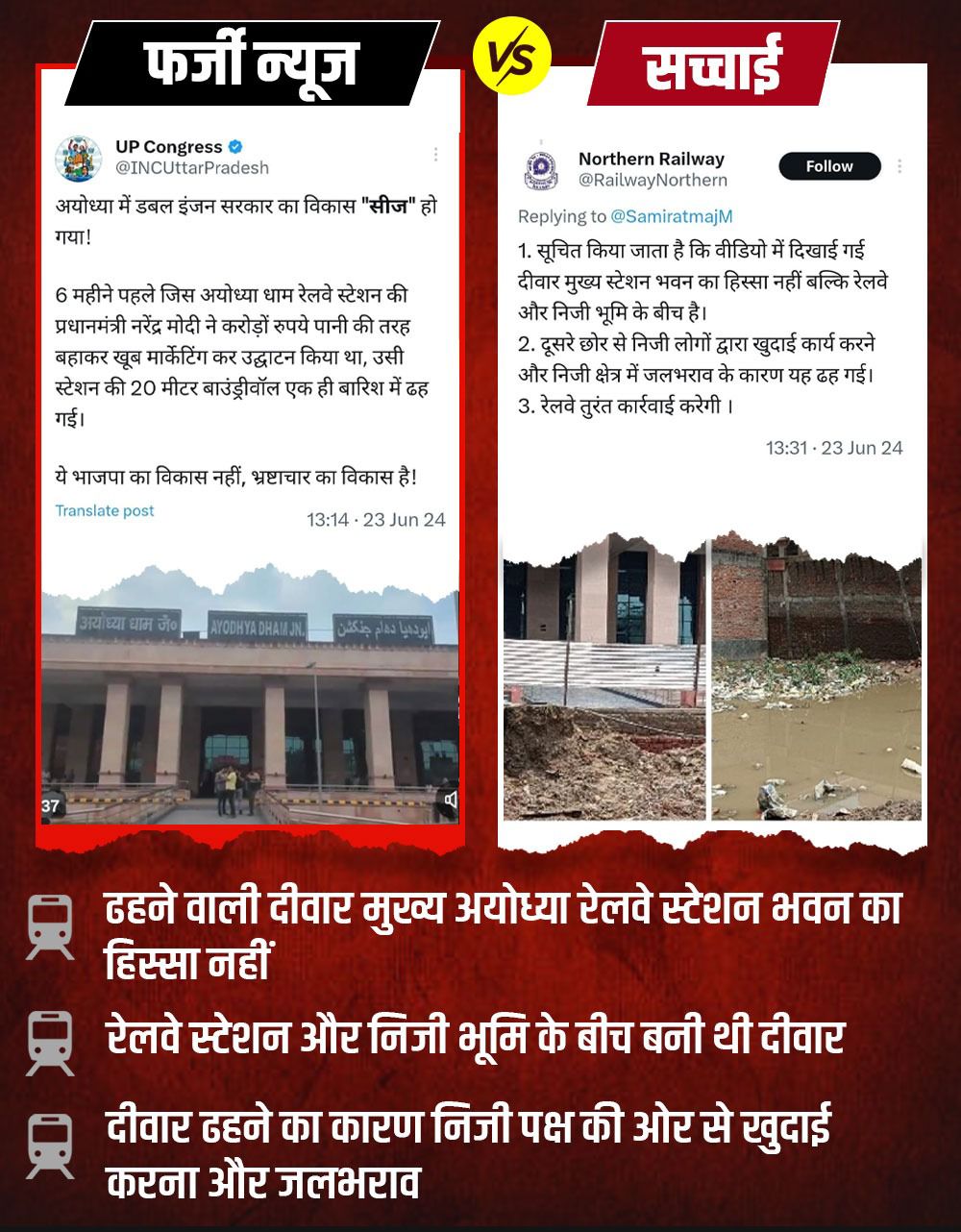Recently, a video went viral on social media claiming that a 20-metre-long boundary wall of the newly built Ayodhya Railway Station collapsed after the first rainfall. This incident has caused concern and raised questions about the construction quality and safety measures taken during the station’s development. However, an investigation into the matter reveals a different story.
The Incident
The video shows a section of a boundary wall that had indeed collapsed. The initial reports and the viral nature of the video led many to believe that this was part of the main station building, sparking widespread criticism and worry. The Ayodhya Railway Station, recently constructed with significant investment and fanfare, was seemingly compromised by the first bout of rain, according to these claims.
The Official Clarification Ayodhya Railway Station
The Indian Railways quickly responded to the viral claims with an official statement. They clarified that the wall shown in the video was not part of the main Ayodhya Railway Station building. Instead, it was a boundary wall situated between private land and the railway’s land. The collapse was attributed to excavation work and waterlogging on the adjacent private land, not the quality of the railway station construction.
Details of the Clarification Ayodhya Railway Station
The Railways explained that the excavation work being carried out on the private land adjacent to the boundary wall significantly weakened the structure. Coupled with the heavy rainfall, this led to waterlogging, which further destabilized the already compromised wall. As a result, the wall collapsed. Importantly, this boundary wall was not integral to the main station building or its operations, but rather a demarcation between different parcels of land.
Political Reactions and Misinformation
The incident has not only been a topic of public discourse but has also seen a political dimension. Opposition groups and certain left-wing factions have been quick to seize upon this incident to criticize the work being done in Ayodhya, including the efforts to build the Ram Mandir. These groups have often been accused of doing everything possible to undermine the progress of Shree Ram Lalla’s temple and related development projects.
Shehzad Jai Hind (@Shehzad_Ind) recently tweeted about the situation, highlighting that News24 had deleted the fake news tweet about the boundary wall collapse. His tweet read: “News24 has deleted the fake news tweet. Before After. Others will be pursued too. @legalhindudef. Jai Shri Ram.”

The Impact of the Misleading Claims
The viral video and the ensuing claims had the potential to undermine public confidence in the new Ayodhya Railway Station and, by extension, the broader development efforts in the area. Given the significant cultural and economic importance of Ayodhya, such misinformation could have broader implications. The rapid spread of the video also highlights the challenges faced in the digital age where information, whether accurate or not, can quickly influence public perception.
Importance of Fact-Checking
Fact-check and verify information before spreading it. Social media platforms amplify misinformation, causing unnecessary panic and mistrust. Always consult official statements and credible sources to ensure accuracy.
The claim that a 20-metre-long boundary wall of the newly built Ayodhya Railway Station fell after the first rainfall misleads. The wall in question, affected by excavation and waterlogging on adjacent private land, isn’t part of the main station building. Indian Railways clarify the situation, emphasizing the station’s structural integrity remains intact. This incident underscores the importance of verifying facts and the potential consequences of digital-age misinformation.
Development in Ayodhya, including Shree Ram Lalla’s temple construction, faces scrutiny and political criticism. Misinformation can have particularly damaging consequences in such contexts!



